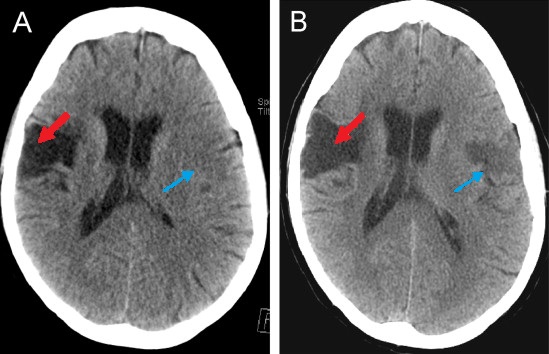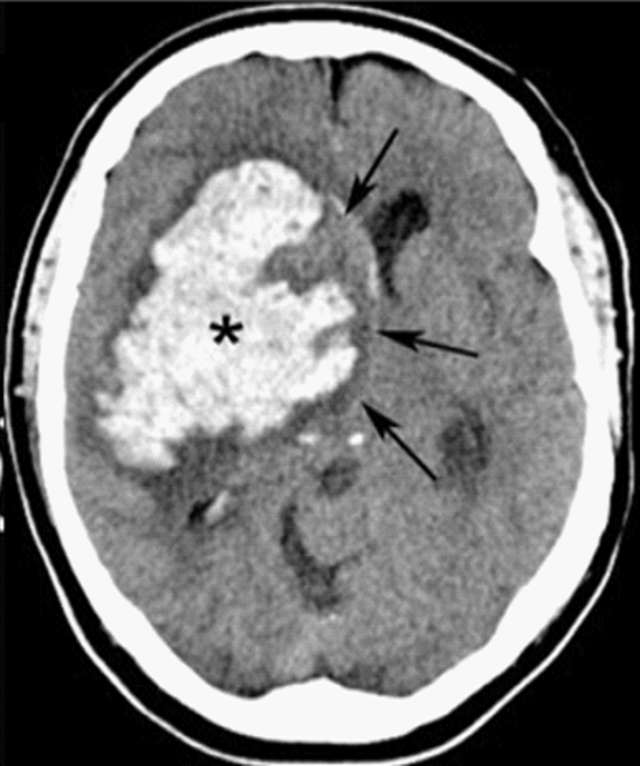Playlist
Show Playlist
Hide Playlist
Stroke: Introduction and Types
-
Slides Stroke and intracranial hemorrhage.pdf
-
Download Lecture Overview
00:01 In this lecture, we're going to talk about stroke and this will be our introduction to stroke. 00:07 This is a really important lecture, a critically important topic. 00:11 We see this a lot clinically and need to evaluate this in clinical vignettes. 00:16 Let's start with, what is a stroke? Stroke is a disease that affects the arteries leading to and within the brain. 00:25 Strokes occur when blood vessels that carry oxygen and nutrients to the brain are either blocked by a blood clot in a setting of an ischemic stroke, or become leaky and burst or rupture, in the situation of a hemorrhagic stroke. 00:41 Strokes are really important to understand. 00:43 We're going to walk through the pathophysiology, the clinical presentations, the evaluation, and workup for patients who present with stroke. 00:52 When we think about the causes or types of strokes, there are two types of stroke. 00:58 The first is ischemic stroke, and this develops as a result of a blood clot for any number of reasons. 01:06 When there's a clot in an artery, there is reduced perfusion and we can see that in the schematic here, reduced perfusion in the lenticulostriate arteries leads to death of those cells, of those neurons and astrocytes and loss of neurologic function. 01:23 Patients present with that loss of neurologic function and our evaluation with imaging and other studies are to find this area of ischemic or infarcted tissue, and intervene as soon as possible. 01:37 Once the tissue has died and the cells have been lost, function cannot be recovered and during the recovery process, we look to recruit other areas of brain to fill in that lost function. 01:49 And that's ischemic stroke. 01:51 The second type of stroke is a hemorrhagic stroke. 01:55 This is the leaky blood vessel stroke or bursting or rupturing of a blood vessel results in leaking of blood into the brain, and you can see that here in this schematic. 02:06 The buildup of blood results in inflammation and there's an inflammatory response that increases the total amount of water and cells that are in the brain, that can compress the nerves and blood vessels and result in secondary ischemia, as well as loss of nerve function and cell function, and ultimately cell death and that same loss of neurologic function. 02:30 With hemorrhagic strokes, we see a greater likelihood of recovery because the ischemia that occurs is a secondary process, but we can still see substantial neurologic deficits. 02:41 Our goal when evaluating either an ischemic or hemorrhagic stroke is to make the diagnosis as soon as possible and to intervene appropriately depending on the type of stroke that the patient is suffering. 02:54 In general, we see that ischemic strokes are much more common. 02:59 About 85% of patients who are presenting with a stroke will be suffering an ischemic stroke, a clot in some artery going to the brain, the cerebrovascular system. 03:10 An important minority of stroke about 15% of strokes will be the hemorrhagic strokes, where weakening of the blood vessel results in rupture of the blood vessel bleeding in and around the brain in neurologic dysfunction for that reason. 03:25 We're going to spend a lot of time talking about each type of stroke when patients present, odds are, we're worried about an ischemic stroke, but we need to be mindful of those patients presenting with a hemorrhagic lesion. 03:37 And this is a good opportunity to talk about terminology. 03:41 When we talk about hemorrhages in the brain, there are both intracranial hemorrhages and that's bleeding anywhere inside the calvarium, the skull. 03:51 And then there's intracerebral hemorrhage, that's bleeding inside the cerebrum, inside the cortex the brain itself. 03:57 So, when we think about the types of hemorrhages that we can see in the nervous system, there's intracerebral or intraparenchymal hemorrhage, that's hemorrhage inside the brain tissue; and subarachnoid hemorrhage. 04:09 Those are both strokes or types of hemorrhagic stroke. 04:13 We can also see bleeding outside of the brain but inside the calvarial vault and that includes subdural hemorrhage, epidural hemorrhage, and other types of hemorrhage. 04:23 Those are not considered strokes, but are important types of intracranial hemorrhage. 04:28 Some important terminology as we embark on learning about stroke.
About the Lecture
The lecture Stroke: Introduction and Types by Roy Strowd, MD is from the course Stroke and Intracranial Hemorrhage.
Included Quiz Questions
What is a type of hemorrhagic event outside of the brain parenchyma that is still considered a stroke?
- Subarachnoid hemorrhage
- Blood vessel blocked by a clot
- Subdural hematoma
- Epidural hematoma
- Ischemic stroke
What is the most common type of stroke?
- Ischemic stroke
- Epidural hematoma
- Intraparenchymal bleed
- Subdural hematoma
- Subarachnoid hemorrhage
Customer reviews
5,0 of 5 stars
| 5 Stars |
|
5 |
| 4 Stars |
|
0 |
| 3 Stars |
|
0 |
| 2 Stars |
|
0 |
| 1 Star |
|
0 |





